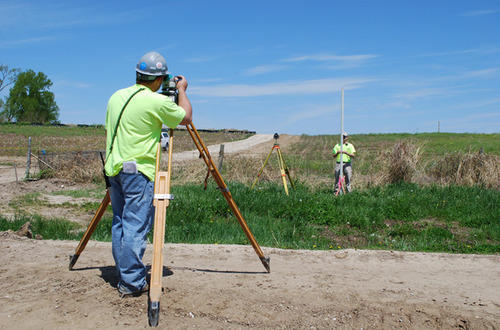Object
The aim of leveling is to determine the relative heights of different objects on or below the surface of the earth and to determine the undulation of the ground surface.
Uses of Leveling Survey
Leveling is done for the following purposes:
- To prepare a contour map for fixing sites for reservoirs, dams, barrages, etc., and to fix the alignment of roads, railways, irrigation canals, and so on.
- To determine the altitudes of different important points on a hill or to know the reduced levels of different points on or below the surface of the earth.
- To prepare a longitudinal section and cross-sections of a project (roads, railways, irrigation canals, etc) in order to determine the volume of earth work.
- To prepare a layout map for water supply, sanitary or drainage schemes.

DEFINITIONS
Leveling is done for the following purposes:
- Levelling The art of determining the relative heights of different points on or below the surface of the earth is known as leveling. Thus, leveling deals with measurements in the vertical plane.
- Level surface Any surface parallel to the mean spheroidal surface of the earth is said to be a level surface. Such a surface is obviously curved. The water surface of a still lake is also considered to be a level surface.
- Level line Any line lying on a level surface is called a level line. This line is normal to the plumb line (direction of gravity) at all points
- Horizontal plane Any plane tangential to the level surface at any point is known as the horizontal plane. It is perpendicular to the plumb line which indicates the direction of gravity
- Horizontal line Any line lying on the horizontal plane is said to be a horizontal line. It is a straight line tangential to the level line
- Vertical line The direction indicated by a plumb line (the direction of gravity) is known as the vertical line. This line is perpendicular to the horizontal line
- Vertical plane Any plane passing through the vertical line is known as the vertical plane.
- Datum surface or line This is an imaginary level surface or level line from which the vertical distances of different points (above or below this line) are measured. In India the datum adopted for the Great Trigonometrically Survey (GTS) is the mean sea level (MSL) at Karachi.
- Reduced level (RL) The vertical distance of a point above or below the datum line is known as the reduced level (RL) of that point. The RL of a point may be positive or negative according as the point is above or below the datum.
- Line of collimation It is an imaginary line passing through the intersection of the cross-hairs at the diaphragm and the optical centre of the object glass and its continuation. It is also known as the line of sight.
- Axis of the telescope This axis is an imaginary line passing through the optical centre of the object glass and the optical centre of the eye-piece.
- Axis of bubble tube It is an imaginary line tangential to the longitudinal curve of the bubble tube at its middle point
- Bench-marks (BM) These are fixed points or marks of known RL determined with reference to the datum line. These are very important marks. They serve as reference points for finding the RL of new points or for conducting leveling operations in projects involving roads, railways, etc.
Bench-marks may be of four types: (a) GTS, (b) Permanent, (c) temporary, and (d) arbitrary.
(a) GTS Bench-marks These bench-marks are established by the survey of India Department at a large intervals all over the country.
The values of reduced levels, the relevant positions and the number of bench-marks are given in a catalogue published by this department
BASIC SERVICES
- Cadastral Survey
- GPS, RTK, DGPS Survey
- Final Location Survey
- Contour Survey
- Drawing Digitization
CONSTRUCTION SERVICES
- Engineering Survey
- Pipeline Survey
- Topographical Survey
- Land Survey
OTHER SERVICES
- Road Survey
- Railway Survey
- Airport Road Survey
- Dam Survey
- Bridge Survey
- Hill Survey
- River Survey
